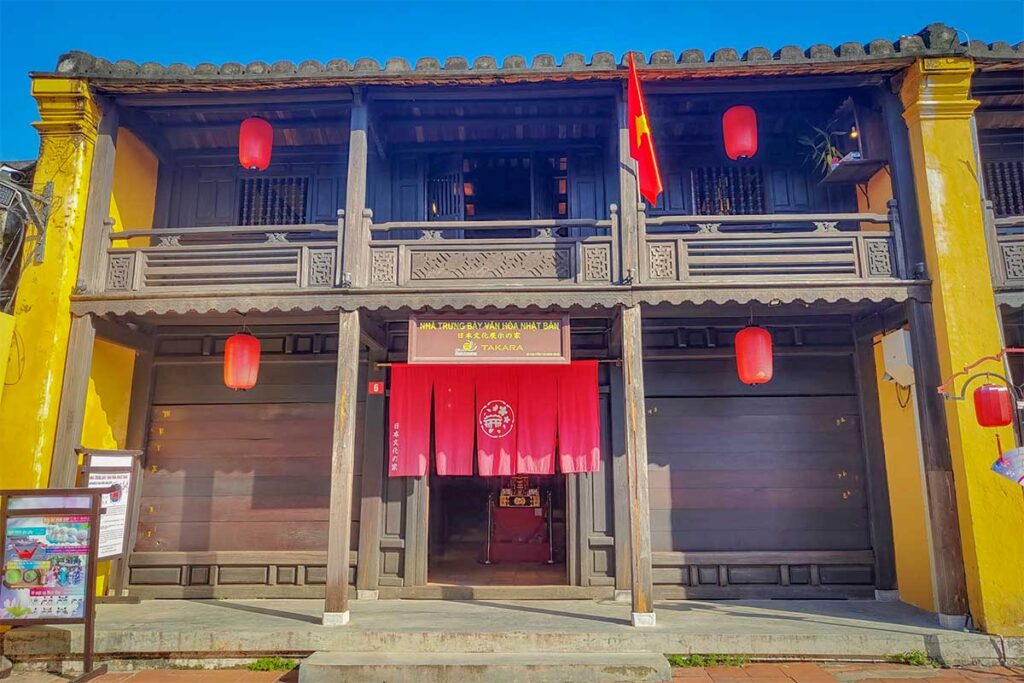What is Phung Hung Old House?
Phung Hung Old House is located at 4 Nguyen Thi Minh Khai Street, just a few steps from the Japanese Covered Bridge in the heart of Hoi An Ancient Town. It was built in 1780 by a Vietnamese merchant who traded in silk, cinnamon, ceramics, and other goods during Hoi An’s commercial golden age.
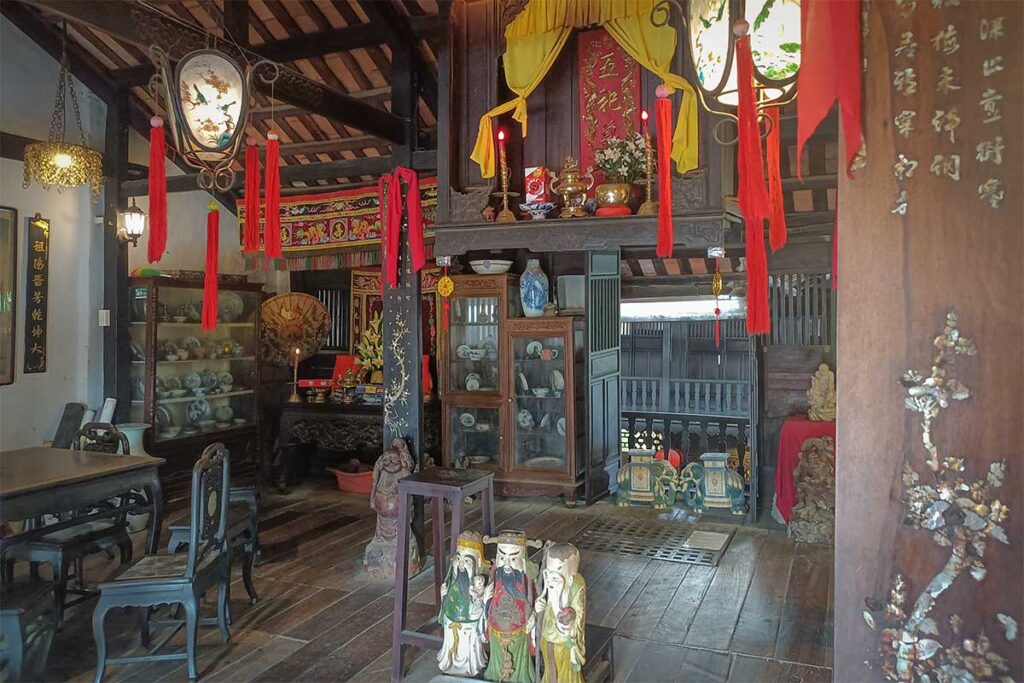
The name Phung Hung means “Wishing for Prosperity,” reflecting the owner’s hopes for a thriving business. The house has remained in the hands of the same family for eight generations, and part of it is still used as a residence today. Entry is included with the Hoi An Ancient Town ticket and counts as one of your five ticketed visits.
History of Phung Hung Old House
Phung Hung Old House was built in the late 18th century, a time when Hoi An was one of Southeast Asia’s busiest trading ports. The house functioned as both a family residence and a commercial space, selling goods like silk, spices, and ceramics to international traders. Its strategic location—just steps from the river and Japanese Covered Bridge—made it ideal for merchant activity. In 1993, it was officially recognized as a National Historical and Cultural Relic for its architectural and cultural significance.
Architecture & layout
Phung Hung Old House is a great example of multicultural architecture, combining elements from Vietnamese, Chinese, and Japanese traditions. It was designed for both practical use and symbolic meaning—built to withstand Hoi An’s climate while reflecting status and belief systems.
1. Blended cultural design
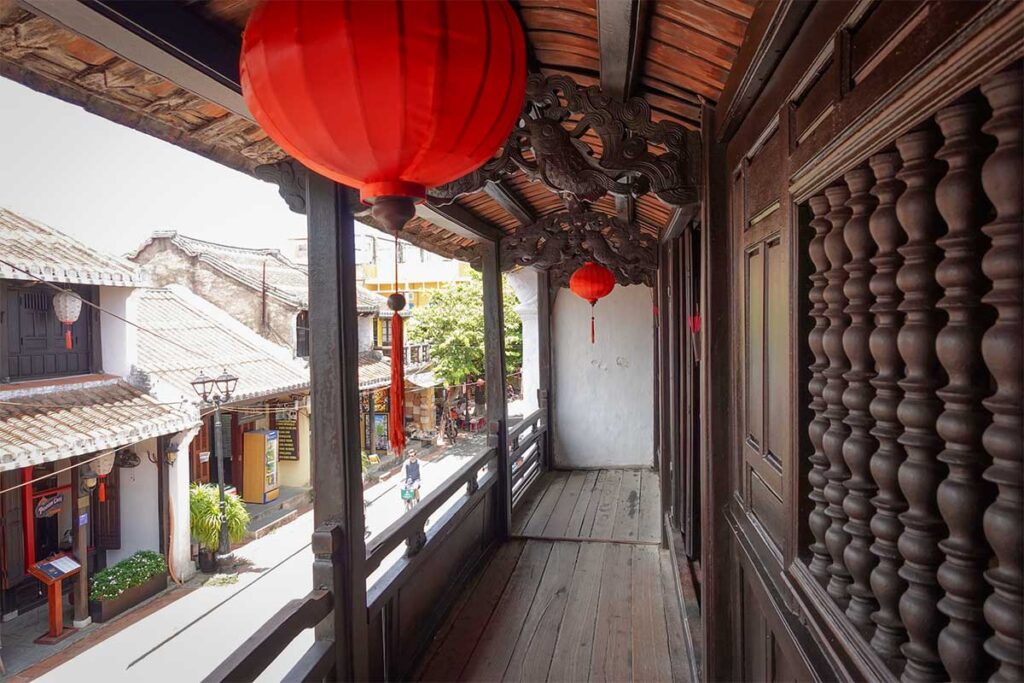
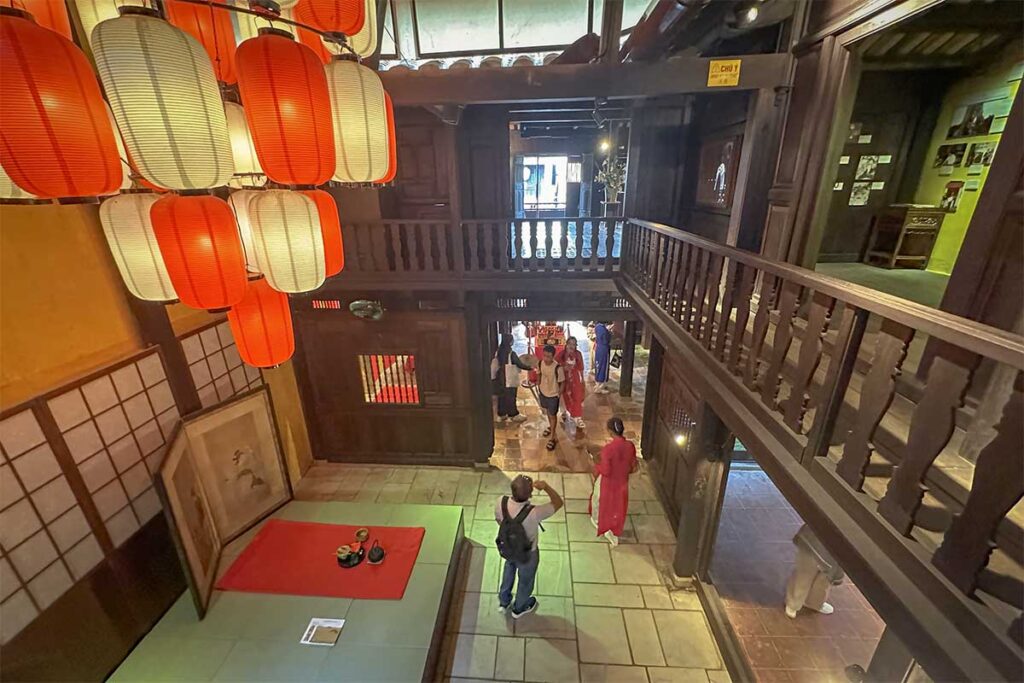
The structure is supported by more than 80 ironwood columns, chosen for their strength and resistance to moisture and termites. The roof, laid with yin-yang tiles, follows a Japanese spreading eave style that keeps the interior cool in summer and ventilated year-round.
2. Symbolic features

- The façade has three doors: a wide central door for formal entry and two side doors for daily use and trade.
- Above the main door, you’ll see “god-eye” circular windows, a feng shui element meant to protect the home from negative energy.
- The balcony on the second floor is adorned with carved carp motifs, symbolizing prosperity, luck, and authority across Vietnamese, Chinese, and Japanese cultures.
3. Interior layout
The first floor was originally a shop area, now used to greet guests. It includes traditional wooden furniture, display boards, and family antiques.
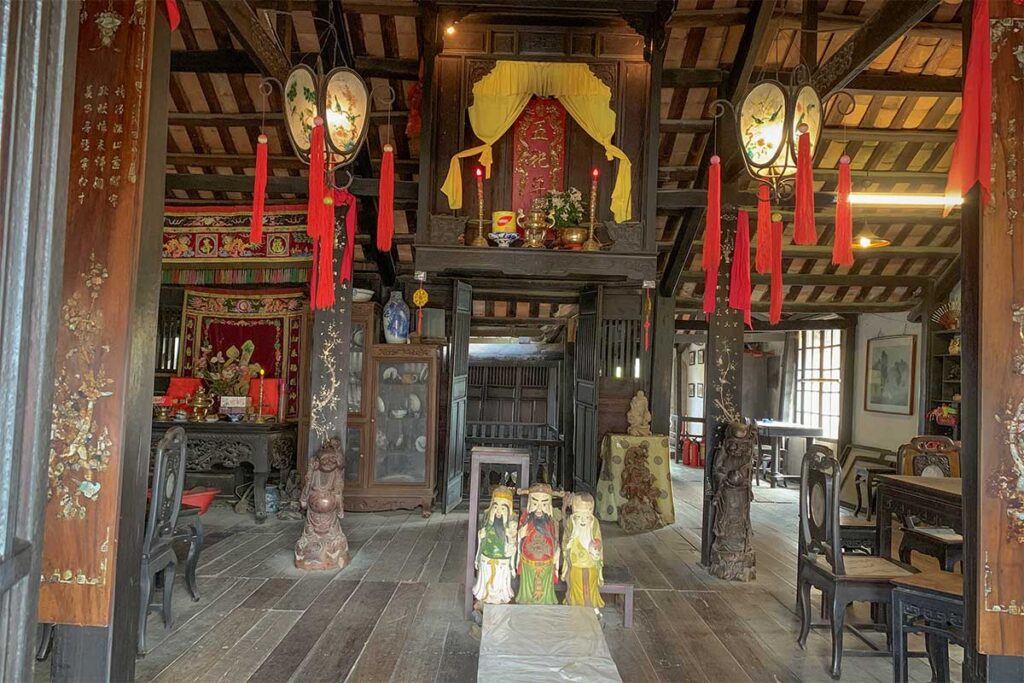
The second floor contains the family’s worship space, with ornate ancestral altars, offering tables, and spiritual decorations.
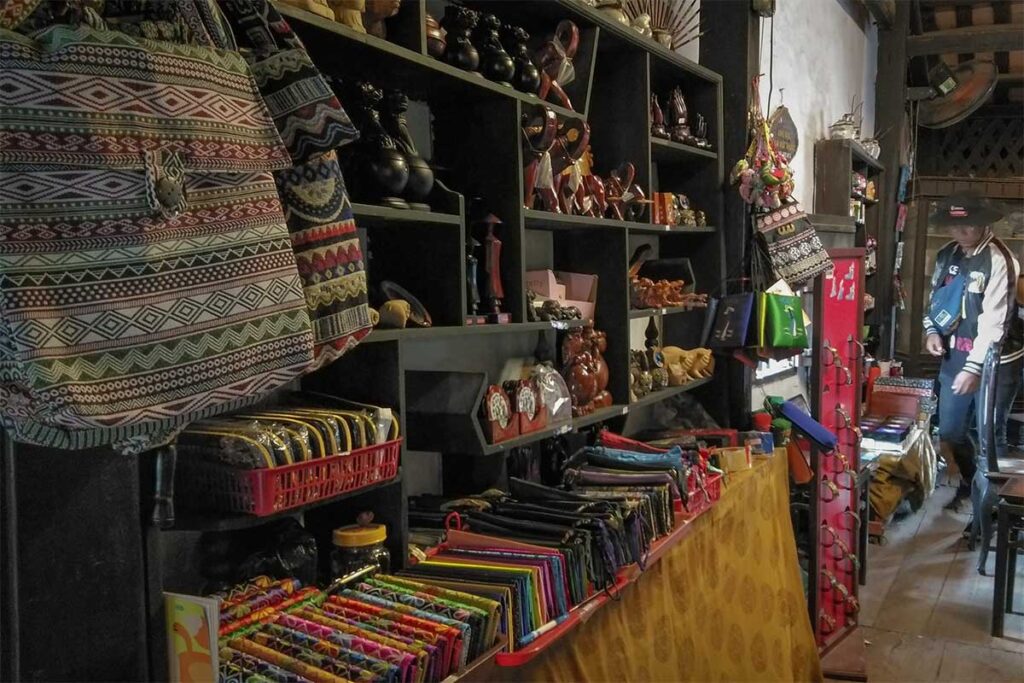
Some areas now serve as souvenir displays, with local crafts and embroidered textiles for sale—though this shifts the experience slightly toward a commercial feel.
Visiting information
Location
4 Nguyen Thi Minh Khai Street, directly next to the Japanese Covered Bridge—one of the busiest areas in Hoi An Ancient Town.

Getting there
Easily walkable from anywhere within the Ancient Town. No motorbikes or cars allowed inside, so park near an entrance if you’re staying outside the Old Town.
Opening hours
Open daily from 8:00 AM to 6:00 PM, though hours may vary slightly depending on the season or holidays.

Entry fee
Access is included in the Hoi An Ancient Town ticket (120,000 VND), which covers five sites of your choice. Phung Hung counts as one of these.
Tips
- Go early or late in the day to avoid peak crowds and heat.
- The house is known for its balcony view—a peaceful spot to take in the street scene below.
- Expect a sales pitch: some “guides” may offer to explain the house’s history but lead quickly into selling embroidered items or souvenirs.
- The experience can feel more commercial than cultural, especially compared to other old houses.
- Dress modestly out of respect for the ancestral altar still in use by the family.
Is it worth visiting?
Phung Hung Old House is one of the oldest heritage homes in Hoi An, but the experience today feels heavily commercialized.
You might enjoy it if you’re particularly interested in traditional architecture or are already visiting the Japanese Covered Bridge next door. The blend of Vietnamese, Chinese, and Japanese elements is interesting, and the balcony offers a nice street view.
However, if you’ve already seen houses like Tan Ky or Quan Thang, this one may feel less authentic. Several rooms now function more like souvenir stalls, and the historical atmosphere is somewhat overshadowed by sales activity.
If you’re choosing carefully how to use your 5 Ancient Town ticket slots, Phung Hung may not be a top priority.
Tip: For a better preserved and more informative old house experience, visit Tan Ky Old House instead.
